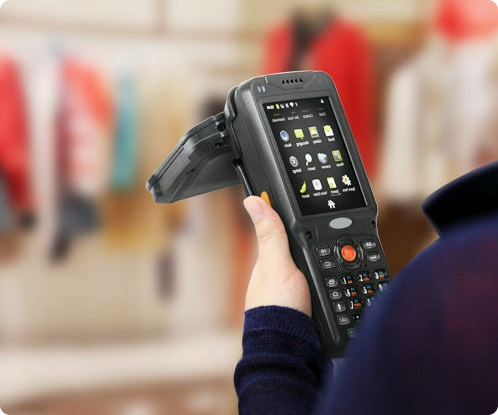RFID smart warehouse logistics
At the end of the 1990s, the US Department of Defense ’s Quartermaster Supply Bureau was responsible for managing and transporting as many as 46 million items each year. These items range from fruits and soft drinks to bulletproof vests, gasoline, and X-ray machines. The total value is as high as US $ 83.2 billion. In order to reduce the expenditure on transportation management, the authorities decided to put 23 warehouses under one RFID system for management, and merge and reorganize the original 42 sets of business and support processes. Through the successful implementation of this RFID system, the US Department of Defense Quartermaster Supply Bureau has successfully saved nearly $ 1.8 billion. After more than two years of reorganization, the US Defense Supply Supply Agency ’s staffing also decreased from 65,000 to 21,500.
Through the use of RFID technology, Wal-Mart can save labor costs of 8.35 billion US dollars each year and recover more than 2 billion US dollars lost due to theft. According to Kearney’s analysis and summary, the benefits of retailers using RFID technology will come from three aspects: ① due to reduced inventory, the one-time cash saving is about 5% of the total inventory; ② the annual reduction of storage and warehouse labor costs by 7.5% ; ③ Reduced out-of-stock items.

At the end of the 1990s, the US Department of Defense ’s Quartermaster Supply Bureau was responsible for managing and transporting as many as 46 million items each year. These items range from fruits and soft drinks to bulletproof vests, gasoline, and X-ray machines. The total value is as high as US $ 83.2 billion. In order to reduce the expenditure on transportation management, the authorities decided to put 23 warehouses under one RFID system for management, and merge and reorganize the original 42 sets of business and support processes. Through the successful implementation of this RFID system, the US Department of Defense Quartermaster Supply Bureau has successfully saved nearly $ 1.8 billion. After more than two years of reorganization, the US Defense Supply Supply Agency ’s staffing also decreased from 65,000 to 21,500.
Through the use of RFID technology, Wal-Mart can save labor costs of 8.35 billion US dollars each year and recover more than 2 billion US dollars lost due to theft. According to Kearney’s analysis and summary, the benefits of retailers using RFID technology will come from three aspects: ① due to reduced inventory, the one-time cash saving is about 5% of the total inventory; ② the annual reduction of storage and warehouse labor costs by 7.5% ; ③ Reduced out-of-stock items.


On June 8, 2011, the State Council promulgated eight new countries in the logistics industry, clearly stating that it is necessary to promote the innovation and application of logistics technology. Strengthen the independent research and development of new logistics technologies, accelerate the development of advanced logistics equipment, formulate and promote logistics standards, start the application demonstration of the Internet of Things in a timely manner, and promote the open sharing of logistics information resources.
Logistics informatization refers to the comprehensive use of modern information and communication technologies such as sensor technology, positioning technology, and video surveillance technology in logistics activities, making full use of information flow control and leading logistics, and effectively allocating logistics resources. Various elements of logistics activities include rich functional application needs, the wide application of various Internet of Things technologies, and the continuous improvement of industry functions have gradually moved the traditional logistics industry to a new modern logistics.
On June 8, 2011, the State Council promulgated eight new countries in the logistics industry, clearly stating that it is necessary to promote the innovation and application of logistics technology. Strengthen the independent research and development of new logistics technologies, accelerate the development of advanced logistics equipment, formulate and promote logistics standards, start the application demonstration of the Internet of Things in a timely manner, and promote the open sharing of logistics information resources.
Logistics informatization refers to the comprehensive use of modern information and communication technologies such as sensor technology, positioning technology, and video surveillance technology in logistics activities, making full use of information flow control and leading logistics, and effectively allocating logistics resources. Various elements of logistics activities include rich functional application needs, the wide application of various Internet of Things technologies, and the continuous improvement of industry functions have gradually moved the traditional logistics industry to a new modern logistics.

The application of information logistics warehousing is as follows
Intelligent warehousing
Adopting RFID technology as a key technology in the warehouse management system can significantly improve the warehouse and logistics management technology level, enterprises can obtain good return on investment, and can effectively avoid and reduce repetitive investment in enterprise information upgrade in the future.
(1) The system should be able to realize the visual management of warehouse real-time data in the management center, and truly achieve the synchronization of real logistics and data flow.
(2) Realize the electronicization of pallets and loading and unloading points, realize the efficient entry and exit of goods, effectively complete the management and distribution, realize the positioning of goods and fast retrieval

Intelligent warehousing
Adopting RFID technology as a key technology in the warehouse management system can significantly improve the warehouse and logistics management technology level, enterprises can obtain good return on investment, and can effectively avoid and reduce repetitive investment in enterprise information upgrade in the future.
(1) The system should be able to realize the visual management of warehouse real-time data in the management center, and truly achieve the synchronization of real logistics and data flow.
(2) Realize the electronicization of pallets and loading and unloading points, realize the efficient entry and exit of goods, effectively complete the management and distribution, realize the positioning of goods and fast retrieval

Intelligent sorting
“Automatic sorting” solution based on RFID technology adopts more advanced automatic identification technology. Compared with traditional sorting systems, it has a lower error rate, is not affected by the direction of goods placement, and can penetrate greatly. Some materials read and store more material information for better scalability. Using RFID technology, the RFID reader device is installed on the key node of the conveyor line, which can automatically achieve tracking management of the package information. Automatically recording the operation process and operation time of the transported items has an important role in improving the conveying speed, reducing the transmission errors, and missing the goods.

Visual Logistics
All logistics links realize the visualization of logistics information, including logistics resource information, logistics demand information, logistics process, logistics status, logistics control and logistics environment visualization. Logistics visualization is aimed at logistics information, and its premise is the digitization of logistics.
![]()
Cirtek Intelligent IOT (Shenzhen) Co., Ltd.
Phone:0755-8891 0613
Email:info@cirteklink.com
Address:Room C, Unit B1, 3/F, Block AB, Tianxiang Bulding, Tian An Cyber Park, Tairan 5th Road, Futian District, Shenzhen City, Guangdong Province, China
 Scan QR code to follow Learn more
Scan QR code to follow Learn more